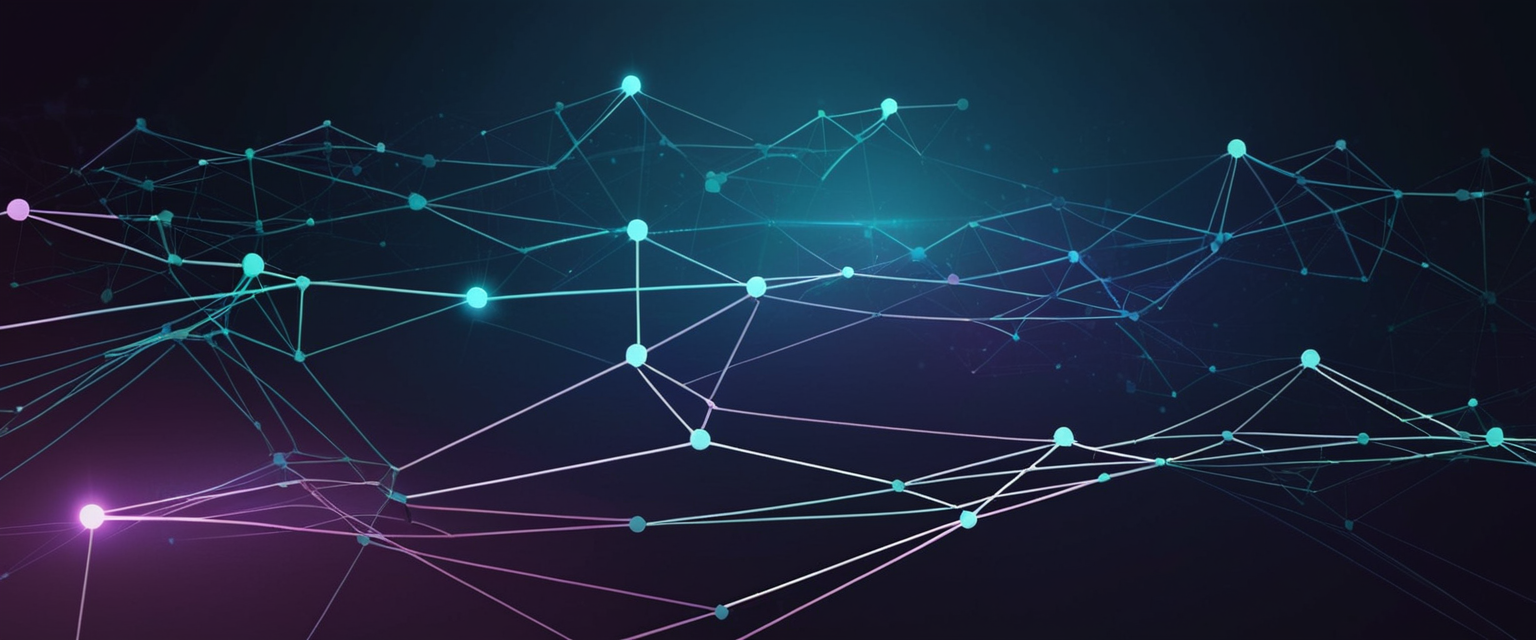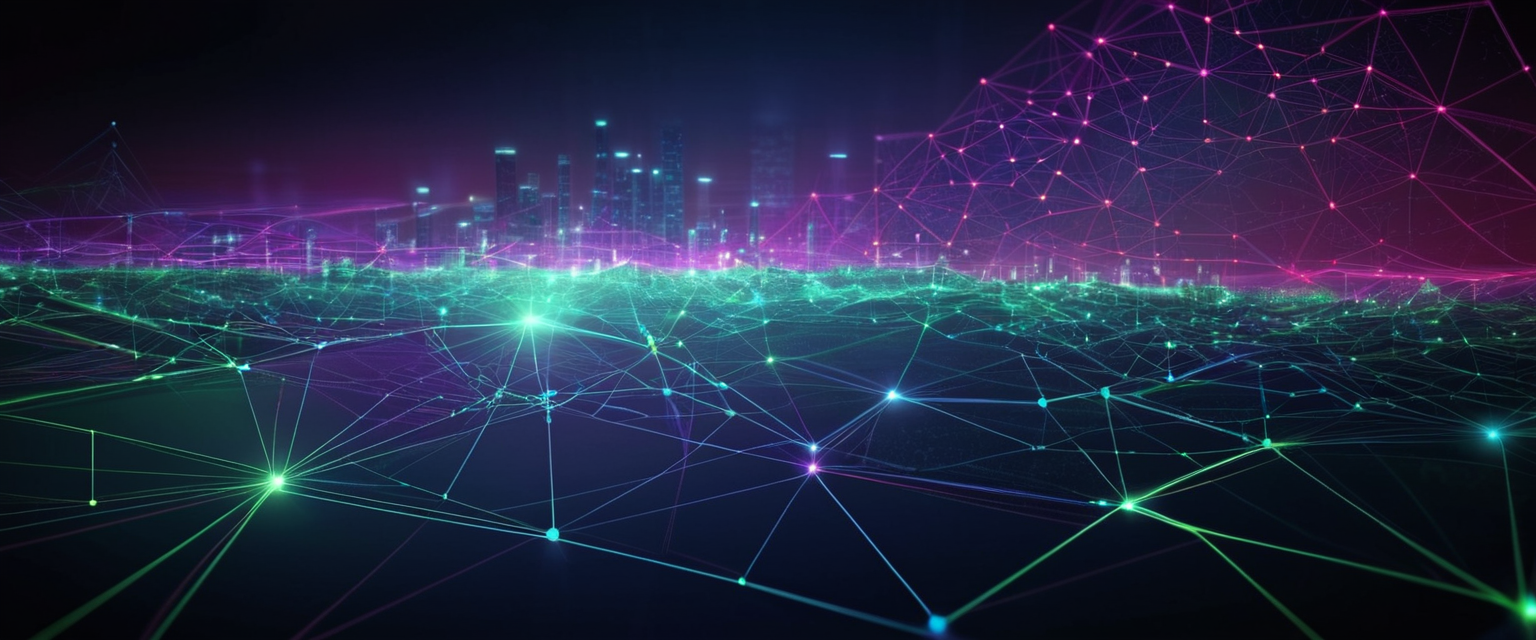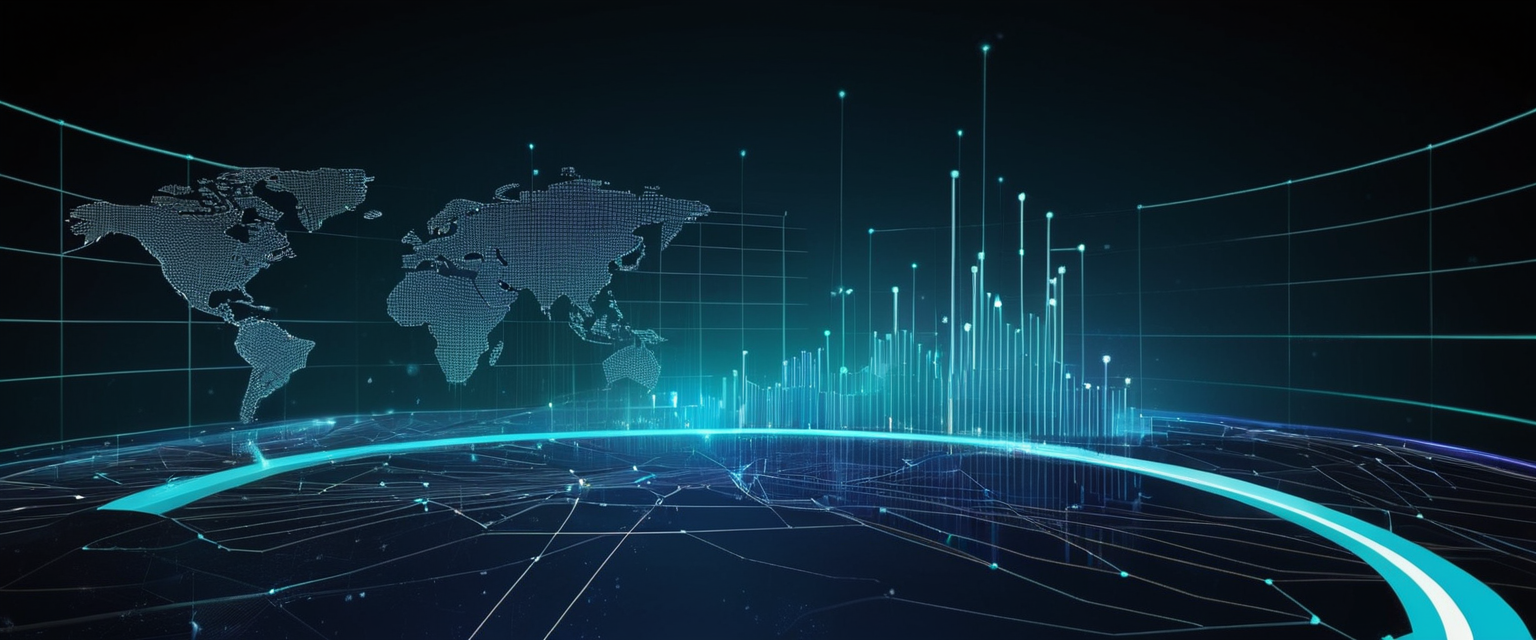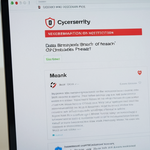
The dark web represents approximately 0.01% of the total internet yet commands substantial attention from cybersecurity professionals, law enforcement agencies, and organizations concerned with data protection. This hidden portion of the internet, accessible primarily through specialized browsers like Tor, functions as both a platform for legitimate privacy-conscious communication and a marketplace for illicit activities. While the dark web maintains a notorious reputation, much of the public understanding of this digital frontier remains muddled by misconceptions that conflate it with the broader deep web and attribute all dark web activity to criminal enterprises. To effectively address the cybersecurity challenges posed by data exposure on the dark web, organizations must first establish precise definitions and understand the technological architecture that enables anonymity and encryption. Dark web monitoring has emerged as a critical security practice, enabling organizations to detect compromised credentials, intellectual property theft, and other sensitive data breaches before they can be further exploited by malicious actors. This comprehensive analysis systematically distinguishes the dark web from related internet layers, explains the technical mechanisms that provide anonymity, examines the reality of dark web activity, and details how organizations implement monitoring and response strategies to minimize exposure risk.
Foundational Definitions: Understanding the Layers of the Internet
The confusion surrounding dark web terminology stems largely from imprecise language that conflates fundamentally different concepts. The internet can be conceptually divided into three distinct layers, each serving different functions and presenting different accessibility characteristics. Understanding these layers provides essential context for comprehending why dark web monitoring has become necessary and how it operates within the broader information security landscape.
The surface web, also referred to as the open web or visible web, comprises the portion of the internet indexed by standard search engines such as Google and Bing. When individuals use conventional browsers to access websites, check social media, or browse online news sources, they interact exclusively with surface web content. This layer represents the most immediately accessible portion of the internet, yet constitutes only approximately 5-10% of total online content. The surface web operates without significant barriers to access; content creators generally intend their material to be publicly discoverable, and standard web browsers provide all necessary tools for navigation. From a cybersecurity perspective, the surface web presents substantial vulnerabilities as it lacks the protective anonymity features found in deeper internet layers, making it an active zone for phishing campaigns, malware distribution, and other direct attacks against users and organizations.
The deep web encompasses all internet content that is not indexed by standard search engines, representing approximately 90% of total online content. This expansive category includes password-protected services that legitimate internet users access routinely throughout their daily activities. When individuals check email accounts, access banking services, review medical records, examine academic databases, or subscribe to streaming entertainment services, they navigate the deep web. Corporate intranets, government databases, and proprietary research repositories similarly constitute deep web content. The deep web’s lack of indexing results entirely from intentional design decisions by website operators who wish to restrict access to specific individuals or require authentication credentials. The deep web is fundamentally harmless in nature; it exists to protect privacy, secure sensitive information, and control access to services that legitimately require verification of user identity. The critical distinction between the deep web and the dark web rests not on the presence of encryption or anonymity—both may employ such technologies—but rather on the explicit design purpose of the technology implemented.
The dark web exists as a specialized subset of the deep web, comprising unindexed content intentionally designed with anonymity and encryption as primary architectural features. Users cannot stumble upon dark web content through standard browsers or search engines; accessing it requires deliberate installation of specialized software, most commonly The Onion Router (Tor) browser, and specific knowledge of hidden service locations. The dark web’s technical architecture fundamentally differs from the surface web and conventional deep web services in that anonymity functions as a core design principle rather than an incidental feature. While the deep web employs encryption and authentication to control access to specific users, the dark web employs encryption, routing obfuscation, and multiple layers of technical protection to obscure the identity and location of both service operators and users simultaneously. The dark web comprises perhaps a few thousand to tens of thousands of sites, far smaller in absolute terms than either the surface web or deep web, yet the concentration of sophisticated criminal infrastructure within this limited space has generated disproportionate security concerns.
The relationship between these internet layers might be conceptualized through an analogy to physical privacy levels. The surface web functions as a public space where individuals freely disclose personal information with strangers, comparable to introducing oneself to a large gathering. The deep web operates as a private space where individuals selectively share sensitive information with trusted parties, analogous to discussing personal matters with close friends but not with casual acquaintances. The dark web functions as a secret space where individuals actively hide information from others and deliberately conceal their own identity, comparable to keeping information known only to oneself or trusted confidants who are similarly committed to secrecy. These conceptual distinctions prove critical for understanding why dark web monitoring represents a fundamentally different security practice from other cybersecurity approaches; it directly addresses the intentional anonymity and encryption that obscure criminal activity in ways that conventional security tools cannot penetrate.
The terminology surrounding the dark web has evolved substantially since the term itself first emerged in 2009, though confusion persists even as the practice of dark web monitoring has become more widespread. Organizations and security professionals recognize that distinguishing between the deep web and dark web remains essential for accurate threat assessment and appropriate resource allocation. The conflation of these terms, particularly in media reporting and casual discussion, has contributed to exaggerated perceptions of dark web prevalence and misunderstanding of where cybercriminal activity primarily occurs. While illegal activities certainly exist on the dark web, evidence increasingly demonstrates that the vast majority of cybercriminal activity occurs on the surface web and conventional deep web services, including social media platforms, encrypted messaging applications, forums, and other commonly accessible infrastructure.
The Architecture and Technology Behind the Dark Web
The technical architecture enabling dark web anonymity and encryption represents a sophisticated evolution of cryptographic principles and network routing theory. Understanding how the Tor network and onion routing function provides essential context for comprehending both why the dark web attracts users seeking privacy and why monitoring dark web activity presents unique technical challenges requiring specialized tools and approaches.
The Tor Project, short for “The Onion Router,” originated from research conducted by the United States Department of Defense seeking methods for anonymous communication. The Tor network emerged in its modern form through research conducted at the Naval Research Laboratory and has since evolved into a distributed network operated by thousands of volunteer relay operators worldwide. Tor was released in its initial form in 2002 and deployed as a public browser in 2008, making anonymous dark web browsing accessible to the general public. The fundamental innovation underlying Tor involves the principle of onion routing, a technique that protects users from surveillance and tracking through a randomized pathway of encrypted servers.
When a user initiates a request through the Tor browser to access a website, the technology does not establish a direct connection between the user’s device and the destination server, as occurs with standard internet browsing. Instead, Tor encrypts the user’s data in multiple successive layers, analogous to the layers of an onion, with each layer corresponding to a specific relay node in a randomly selected circuit. The Tor circuit consists of three nodes: an entry node (also termed a guard node), a middle node, and an exit node. Before the user’s web traffic passes through the circuit, Tor encrypts it with multiple layers of encryption, with each layer decryptable only by the corresponding relay node in sequence. The first relay node in the circuit knows only the identity of the user and the location of the second relay node; it cannot determine the user’s intended destination or view the content of the user’s communications. The middle relay node knows only the identity of the entry node and the exit node; it cannot determine either the user’s identity or their final destination. The exit node can view the unencrypted communications that pass through it to reach the final destination website, but it lacks information about the user’s original location or identity, as this information was stripped away at earlier stages in the routing process.
This multilayered encryption process makes data increasingly difficult to trace as it passes through the circuit. The randomization at each node means that an entity attempting to track a user would need to follow the data through each potential routing path, an exponentially difficult task given that Tor selects a different random path of nodes each time a user visits a different website. The complicated encryption system makes it almost impossible to reproduce the node path and decrypt the information layer by layer, thus providing genuine anonymity for users engaging in legitimate privacy-conscious communication. No single relay operator can reveal both the user’s identity and their destination simultaneously; an adversary would need to control or observe all three relay nodes in a specific user’s circuit simultaneously, an extremely difficult proposition given the thousands of relay operators distributed globally.
Tor’s architecture extends beyond simple anonymization of user browsing to enable the operation of hidden services, also known as onion services, which represent websites that operate entirely within the Tor network. These hidden services, identifiable by domain names ending in “.onion,” maintain anonymity at both the server operator level and the user access level. When an onion service operator establishes a hidden service, the service uploads a descriptor containing its public key and the IP addresses of introduction points to a distributed hash table available across the Tor network. The onion service generates a domain name of the form “XYZ.onion,” where XYZ represents a 16-character alphanumeric string derived from a hash of the service’s public key, and associates this name with its descriptor in the distributed hash table.
When users attempt to access an onion service, Tor uses the .onion address to locate the service’s information in the distributed hash table by connecting through a Tor circuit, with the name verified against the hash of the public key to ensure authenticity. The user’s Tor client then selects a random server to function as a rendezvous point and creates a Tor circuit to that rendezvous point, transmitting a one-time secret message that this rendezvous point will recognize. The user’s client sends a message to one of the service’s introduction points, with this message encrypted so that only the onion service can decrypt it, containing the address of the rendezvous point and the one-time secret. The introduction point forwards this message to the onion service itself, with all these connections occurring over Tor circuits to maintain anonymity at every stage. The onion service decrypts the message and creates its own Tor circuit to the rendezvous point, sending the same one-time secret, allowing the rendezvous point to recognize both the client and service and facilitate communication between them. Finally, the rendezvous point creates a full circuit of six nodes between the client and onion service—three from the client and three from the service—enabling secure end-to-end encrypted communication where only the true senders and receivers can read or modify the data.
This architecture creates a remarkable property: web hosts on Tor essentially perform the same anonymity procedures as users browsing Tor, constantly ensuring that their IP addresses remain hidden from any visitor or potential authorities seeking to locate them. The technological sophistication of this arrangement means that traditional network surveillance techniques that rely on monitoring internet traffic patterns or observing IP address relationships cannot penetrate Tor’s protections. The exit node will see unencrypted communications passing through it, but without any location information attached, making it impossible to track the communication back to the user’s original location. Users can further enhance security through end-to-end encryption such as SSL encryption, delivering still-encrypted messages through Tor, preventing even the exit node from accessing the data content.
The Tor network’s structure creates unique operational characteristics relevant to dark web monitoring. The network’s distributed nature means that no central authority operates the system; instead, thousands of volunteers worldwide operate relay nodes, contributing bandwidth and processing capacity that enable Tor’s continued function. This decentralized architecture eliminates single points of failure and makes the network extremely resistant to attempts at censorship or shutdown, yet simultaneously prevents any entity from imposing quality controls or rule enforcement across the network. The network remains unregulated, with its operation upheld by distributed volunteer operators rather than formal governance structures, creating an environment where both legitimate privacy advocates and criminal enterprises can coexist. The network’s anonymity features protect all users equally, regardless of whether they use Tor for legitimate privacy-conscious communication or for illegal activities, creating a fundamental tension between enabling freedom of communication and preventing criminal activity.
Dark Web Activity: What Actually Happens There
Perhaps no aspect of dark web discussion generates more confusion and inaccuracy than descriptions of what actually occurs on dark web platforms. Popular culture frequently portrays the dark web as a monolithic criminal marketplace exclusively dedicated to drug trafficking, weapons sales, and other patently illegal activities. The reality proves considerably more nuanced, with dark web activity encompassing legitimate privacy-enabled communication alongside substantially illegal operations, with the distribution of activity across these categories more complex than commonly portrayed.
Legitimate uses of the dark web serve important functions for individuals in specific circumstances. In countries where government surveillance threatens individuals engaged in legitimate political opposition or human rights advocacy, the dark web provides mechanisms for anonymous communication and information sharing that circumvent government censorship and monitoring. Journalists operating in countries with restricted press freedom use the dark web to securely receive sensitive information from sources who fear retaliation. Whistleblowers facing potential persecution for disclosing information of public importance employ dark web platforms such as SecureDrop to transmit sensitive documents to media organizations with assurance of anonymity protection. Major news organizations including The New York Times, CNN, and the Washington Post maintain Tor-accessible versions of their websites to provide access to news content for citizens of countries where these platforms face blocking or censorship. Social media platforms including Twitter have similarly established onion service versions to ensure access for users operating under censorious regimes. Cybersecurity researchers and ethical hackers use the dark web to gather information about emerging threats, exploit kits, and malicious techniques used by criminal enterprises, with this intelligence feeding into defensive security improvements that protect broader populations. The dark web’s role in enabling anonymous academic research, facilitating private discussion of sensitive health issues in communities where disclosure carries significant social risk, and supporting communities facing persecution or discrimination reflects the technology’s legitimate privacy-enabling functions.
Simultaneously, the dark web’s anonymity and encryption features attract criminal enterprises engaged in activities that constitute clear violations of law in jurisdictions worldwide. The dark web hosts active marketplaces for illegal drugs, with these markets generating substantial revenue; recent estimates suggest that dark web drug sales reached approximately $470 million annually. These marketplaces operate with operational sophistication comparable to legitimate e-commerce platforms, featuring vendor reputation systems, buyer feedback mechanisms, escrow services to prevent fraud, and quality assurance processes that buyers use to evaluate products. Weapons trafficking, though less voluminous than drug markets in terms of transaction volume, occurs on dark web platforms with criminal organizations using these channels to acquire military-grade equipment. Stolen data trading represents another major category of dark web activity, with cybercriminals exchanging compromised credentials, credit card numbers, Social Security numbers, and personal information obtained through data breaches or phishing attacks. The credentials market demonstrates particular sophistication, with compromised credentials available for individual purchase or in bulk lots, and vendors offering guarantees regarding credential validity and active access status.
The scale of stolen credentials traded on dark web platforms has grown dramatically over recent years, representing one of the most significant cybersecurity threats emanating from dark web activity. In 2022, stolen account credentials on the dark web increased by 82% to reach 15 billion compromised credentials available for purchase or trade. These credentials provide attackers with immediate pathway to unauthorized access into organizational systems, considerably reducing the time and effort required to compromise networks compared to techniques requiring initial vulnerability exploitation. Compromised credentials are implicated in approximately 19% of data breaches, making credential theft one of the most effective attack vectors in the cybercriminal arsenal. Hackers acquire these credentials through multiple pathways including brute force attacks against systems with weak authentication, purchasing stolen credentials from other cybercriminals who have already conducted successful breaches, or manipulating employees through social engineering techniques to voluntarily disclose their credentials.
Beyond stolen data trading, dark web platforms facilitate the sale of hacking tools, malware variants, ransomware kits, and attack-as-a-service offerings that enable individuals lacking advanced technical capabilities to conduct sophisticated cyberattacks. Ransomware-as-a-service arrangements particularly exemplify this development, whereby experienced criminal developers create ransomware code and establish infrastructure for its distribution, then license this capability to less technically sophisticated criminals who conduct attacks and share revenue with the developers. These arrangements democratize sophisticated cyber attacks by enabling individuals without deep technical expertise to conduct complex criminal operations, substantially expanding the threat landscape faced by organizations. Identity theft services, including the facilitation of new account fraud where criminals open credit accounts or obtain loans using stolen personal information, represent another category of dark web criminal service.
Dark web forums and discussion communities constitute spaces where cybercriminals share tactics, techniques, and procedures with one another, discuss emerging vulnerabilities, plan collaborative operations, and establish relationships that may lead to more sophisticated criminal enterprises. These underground forums function as informal professional networks where experienced cybercriminals mentor newer entrants, establish reputation and credibility within criminal communities, and develop specializations in particular attack techniques or target sectors. The conversations occurring on these forums provide valuable intelligence for security researchers and threat hunters seeking to understand emerging threats, attack methodology evolution, and the operational practices of specific threat actor groups.
A substantial body of evidence challenges the popular conception that all or even most dark web activity involves illegal operations. Research from Flashpoint examining internet-based criminal activity across multiple platforms revealed that while some dark web activity certainly constitutes illegal operations, the vast majority of cybercriminal activity actually occurs on the surface web, social media platforms, encrypted messaging applications, forums such as Reddit and 4Chan, and conventional deep web services rather than on Tor hidden services. Surface websites, social media platforms including Parler and Rumble, encrypted chat applications including Telegram Discord and WhatsApp, social news sites including Reddit, and message boards including 4Chan and 8Chan all serve as primary gathering spaces for cybercriminals and threat actors seeking to congregate and identify one another. This distribution of criminal activity across platforms reflects the reality that Tor’s anonymity, while valuable for certain operations, creates operational friction and accessibility limitations that make it less suitable for criminal activity than more readily accessible platforms. Estimates suggest that approximately 57% of dark web activity involves illegal operations, meaning that 43% of dark web activity falls within legal or ambiguous categories.
The dark web hosts cryptocurrency discussion forums and blockchain-related communities that serve legitimate purposes for individuals interested in decentralized finance, cryptocurrency investment, and blockchain technology development. While cryptocurrency’s pseudonymous nature has made it attractive for criminal money laundering and facilitating illegal transactions, legitimate blockchain development communities, investment discussion forums, and cryptocurrency exchanges operate on dark web platforms serving users seeking privacy-enabled discussion of financial topics. The dark web’s role in supporting research into privacy-enhancing technologies, cryptography, and network security reflects the technology’s application to legitimate scientific inquiry and technological development.
Statistics regarding dark web user demographics provide important context for understanding the reality of dark web usage patterns. The Tor Project reports approximately 2-3 million daily direct users accessing the Tor network in early 2025, with this figure rising from 2 million at the start of 2025 to over 3 million by March 2025. Tens of millions of distinct individuals log on to Tor each month when accounting for users who access the network less frequently. Dark web usage is globally distributed but shows regional variation, with the United States accounting for 17.6% of global Tor users, followed by Germany at 13.5% and India representing another significant portion, with other notable users in Finland, Netherlands, United Kingdom, Indonesia and France each representing 2-3% of users. Awareness of the dark web among the general population has grown substantially, with late 2022 survey data indicating that approximately 50% of United States adults reported familiarity with the dark web, compared to earlier years when unfamiliarity was more prevalent. Growth in dark web activity patterns shows correlation with external events, with dark web forum membership spiking 44% during the COVID-19 pandemic lockdowns in spring 2020 compared to the baseline period, reflecting how increased internet usage and concern about monitoring during periods of social disruption drives increased adoption of anonymity-enabling technologies.

Dark Web Monitoring: Purpose, Processes, and Technical Implementation
Dark web monitoring has emerged as an essential component of comprehensive organizational cybersecurity strategies, addressing the specific threat of data exposure in spaces where conventional security monitoring tools cannot operate. The practice fundamentally differs from other cybersecurity approaches by targeting not threats within an organization’s own infrastructure but rather the criminal marketplaces and forums where stolen information may be traded after unauthorized disclosure.
Dark web monitoring refers to the systematic process of searching for and tracking an organization’s sensitive information on dark web platforms, focusing particular attention on compromised credentials, breached data, intellectual property, proprietary information, and other confidential materials that cybercriminals might trade or sell. The process functions conceptually similar to conventional search engines, but instead of indexing the surface web, dark web monitoring tools navigate hidden Tor services, underground forums, marketplaces, and criminal discussion communities to identify mentions of specific organizations, employees, customers, or data categories of interest. These tools employ sophisticated algorithms and machine learning techniques to recognize relevant information within the vast volume of unstructured data present on dark web platforms, automatically identifying matches and triggering alerts when sensitive information is detected.
The rationale for implementing dark web monitoring stems from the recognition that data breaches and unauthorized information disclosure do not end when stolen data leaves an organization’s network; instead, the criminal monetization of stolen data often occurs through dark web sales or distribution. By monitoring dark web platforms where stolen data appears after breaches, organizations gain the opportunity to detect compromise earlier in the criminal exploitation timeline, enabling faster incident response and limiting the duration that cybercriminals possess exclusive access to stolen information. Without dark web monitoring, organizations may remain unaware of data compromise for extended periods, with average detection time exceeding 200 days and containment requiring an additional 73 days, during which period cybercriminals retain full opportunity to exploit stolen information, sell it to other criminal enterprises, or conduct identity theft against affected individuals. This delay creates significant risk, as compromised credentials can be immediately weaponized against an organization or its customers, potentially enabling further breaches or financial theft well before the organization even becomes aware that compromise has occurred.
The implementation of dark web monitoring involves continuous automated scanning of thousands of dark web sources, including underground forums, marketplaces, paste sites, code repositories, and criminal discussion communities, searching for predetermined keywords, phrases, patterns, or data categories specific to the organization being monitored. Organizations typically define monitoring parameters around their company name, domain names, executive names, employee email addresses, customer data categories, trademark terms, industry-specific identifiers, or other organizational information that would indicate data exposure if discovered on criminal platforms. When a monitoring system detects matching information, it generates alerts that notify relevant organizational personnel including security teams, legal departments, human resources, marketing, or fraud response teams depending on the nature and severity of the detected exposure.
Dark web monitoring tools employ several technological approaches to navigate and analyze dark web content. Some tools function as crawlers, systematically accessing dark web pages, forums, and marketplaces to index content and extract information for analysis. Other tools rely on machine learning and natural language processing to identify relevant information within unstructured criminal forum discussions without necessarily maintaining comprehensive indexes of all dark web content. The most sophisticated tools employ hybrid approaches combining automated crawling, machine learning analysis, threat intelligence integration, and human analyst review to ensure both comprehensive coverage and high-quality, actionable alerts. Real-time capabilities represent a critical feature, with modern dark web monitoring tools providing instant notifications upon discovering sensitive information, enabling response teams to take immediate action rather than discovering exposure only through periodic reporting reviews.
Dark web monitoring solutions typically offer several core capabilities that distinguish them from general-purpose cybersecurity tools. Threat intelligence represents the foundational capability, with dark web monitoring systems generating raw intelligence about threats, vulnerabilities, tactics employed by specific threat actors, and information about compromised data that feeds into broader threat intelligence systems and enriches security analysis. Threat hunting capabilities enable security teams to use dark web monitoring data to accelerate their investigation of suspected compromises, develop comprehensive understanding of specific attackers and their methodologies, and identify patterns indicating organizational targeting or sectoral vulnerability exploitation. Faster incident response results from discovering breaches earlier through dark web monitoring than organizations would through conventional breach detection methods, reducing the critical window during which cybercriminals possess undetected access. Integration into security platforms allows dark web monitoring data to combine with information from other security systems, enabling more accurate threat assessment and comprehensive understanding of an organization’s threat landscape across multiple data sources and attack vectors.
The specific categories of risk that dark web monitoring can expose include third-party data breaches where partner organizations’ compromises expose customer data or organizational information connected to the monitoring organization, data dumps to hacking forums and criminal chatrooms where cybercriminals publicly distribute stolen information to gain reputation or facilitate extortion campaigns, peer-to-peer data leaks where insiders or lower-access individuals distribute stolen information outside formal criminal channels, accidental leaks where sensitive information reaches dark web platforms through unintended distribution mechanisms, brand misuse where cybercriminals impersonate organizations or exploit organizational branding to conduct social engineering attacks, domain spoofing where attackers register domains similar to legitimate organizational domains to conduct phishing or credential harvesting, and potential threats including chatter about planned attacks targeting the organization or its sector.
Dark Web Monitoring: Tools, Implementation, and Organizational Response
The operational implementation of dark web monitoring within organizations requires selection of appropriate tools, integration with existing security infrastructure, and development of response procedures appropriate to different categories of discovered exposure. The marketplace for dark web monitoring solutions has matured substantially, with numerous commercial offerings and open-source options available to organizations of varying sizes and sophistication levels.
Commercial dark web monitoring platforms provide comprehensive solutions designed for integration into enterprise security operations. NordStellar, developed by the team behind NordVPN, represents a threat exposure management platform providing complete visibility into threats targeting organizations. NordStellar continuously scans thousands of dark web sources including hacker forums, ransomware blogs, and Telegram channels searching for leaked or compromised data. The platform monitors for mentions of company names, domains, or specific keywords, combining public and private sources for full visibility into incidents while sending real-time alerts when matches are detected. Recorded Future provides dark web monitoring services that employ machine learning and natural language processing to translate the cryptic language of cyber threats into actionable insights, enabling organizations to quickly identify, profile, and mitigate risks. Flashpoint specializes in darknet intelligence and criminal forum monitoring, providing access to threat actor chatter, emerging vulnerabilities, and tactics used by specific threat groups targeting particular industries.
Open-source and specialized tools complement commercial solutions for organizations with specific technical requirements or limited budgets. Ahmia.fi functions as a search engine for dark web content, indexing Tor websites and making them searchable while focusing on legal and ethical use cases. Censys provides visibility into internet-connected assets including dark web nodes, identifying exposed services and supporting proactive threat hunting across both conventional internet infrastructure and hidden services. Onion Scan operates as an open-source tool specifically designed for auditing and monitoring Tor hidden services, identifying vulnerabilities, detecting misconfigurations, and discovering data leaks within Tor services. TorBot functions as a crawler specifically designed for collecting data from hidden services, automating dark web intelligence gathering and analysis suitable for organizations seeking to scale monitoring efforts.
Implementation of dark web monitoring within organizational security infrastructure involves several procedural and technical considerations. Organizations must first define the specific data and information categories that represent priority monitoring targets, typically including employee email addresses and usernames, customer personal information, financial data, intellectual property and trade secrets, executive names and personal information, source code repositories, and industry-specific identifiers relevant to the organization’s business. The organization establishes monitoring rules and alert criteria specifying which types of matches should generate notifications and to which personnel these notifications should be routed. Integration with security information and event management systems enables dark web monitoring data to feed into broader security analytics, correlation with other security indicators, and comprehensive incident response workflows.
The response procedures organizations implement upon discovering compromised data on the dark web vary based on the nature and sensitivity of the exposed information but generally follow established incident response frameworks adapted to dark web discovery scenarios. Upon detection of compromised employee credentials on dark web platforms, organizations typically initiate procedures including immediate notification to the affected employees, prompts for password resets, review of account access logs to detect unauthorized access, assessment of whether the compromised credentials have been used to access organizational systems, and in severe cases, temporary account suspension pending investigation completion. Discovery of customer personal information on dark web marketplaces typically triggers formal breach notification procedures consistent with applicable regulatory requirements, customer communication outlining the nature and scope of the exposure and recommended protective actions customers should take, engagement with credit monitoring services or identity theft protection providers to support affected customers, investigation to determine breach scope and remediation measures to prevent future similar exposures, and potentially regulatory notifications where legal obligations require breach reporting to government agencies.
When monitoring identifies intellectual property theft or trade secret disclosure on dark web platforms, response procedures typically include immediate engagement with legal departments, assessment of competitive harm and strategic impact resulting from information disclosure, evaluation of intellectual property protection measures currently in place, investigation of potential insider threats if circumstances suggest internal involvement, and potentially coordinated law enforcement engagement to investigate the source of the disclosure and pursue criminal charges where applicable. Discovery of source code repositories, database backups, or other technical infrastructure materials on dark web platforms triggers assessment of what specific systems or data repositories are exposed, evaluation of whether current security controls adequately protect remaining data, investigation of the attack vector through which these materials were obtained, and remediation of the vulnerabilities that enabled the original compromise.
Organizations implementing dark web monitoring often recognize that the practice functions as proactive threat detection comparable to sending a sentinel into a dangerous territory to discover threats early rather than waiting for those threats to manifest as security incidents affecting the organization directly. By actively monitoring dark web marketplaces and forums for mentions of organizational data, security teams gain the opportunity to detect breaches and data exposures earlier in the criminal monetization process, enabling faster response and limiting the total damage resulting from unauthorized disclosure. The benefits of dark web monitoring in organizational risk management prove substantial; organizations that monitor the dark web can identify whether they have been breached, discover indicators suggesting they are likely targets for future breaches, potentially identify specific threat actor groups conducting attacks against them, and learn operational details about the methods and techniques these attackers employ.
Myths, Misconceptions, and Legal Considerations
The popular understanding of the dark web incorporates numerous misconceptions and exaggerated claims that obscure the actual nature and scale of dark web activity. Systematic examination and refutation of these common myths provides essential clarity for organizations developing dark web monitoring and response strategies.
The most fundamental and pervasive misconception presents the dark web as representing the majority or a substantial portion of the internet. This myth frequently incorporates the often-cited statistic that the dark web comprises 96% of the internet, a claim that research definitively contradicts. In reality, the dark web comprises fewer than 60,000 domains while the open web comprises over 300 million domains, making dark web content an extraordinarily small fraction of total internet infrastructure. While organizations allocating domain space for various purposes leave many potential domains unclaimed, the dark web—defined specifically as hidden content requiring specialized software like a Tor browser to access—remains minuscule in scope relative to other internet layers. This misconception likely arises from confusion with the deep web, which legitimately comprises roughly 90% of internet content, but the deep web includes vast repositories of conventional services, databases, and research repositories that bear no resemblance to criminal dark web marketplaces.
A related misconception presents the dark web as a monolithic criminal enterprise where all activity constitutes illegal operations. Research addressing this myth demonstrates that while criminal activity certainly occurs on the dark web, a substantial portion of dark web activity falls within legal boundaries or serves legitimate purposes including privacy-enabled communication, journalism, activism, cybersecurity research, and whistleblowing. The contention that all deep web and dark web activity represents illicit operations fundamentally misrepresents the technological and social realities, confusing the potential for anonymity with the inevitable presence of criminality.
A third misconception specifically targets the dark web’s population, presenting it as a haven exclusively populated by cybercriminals, hackers, and other nefarious actors. The reality reflects far greater diversity, with the dark web’s user base including journalists, activists, cybersecurity researchers, privacy advocates, individuals living under censorious regimes seeking access to unrestricted information, and ordinary individuals concerned about their privacy. While cybercriminals certainly operate on the dark web, they represent a portion of the user base rather than its entirety. This misconception, like others, likely arises from media emphasis on criminal marketplaces and law enforcement takedowns rather than the routine lawful use of Tor by thousands of individuals seeking privacy protections.
A particularly persistent misconception asserts that accessing the dark web itself constitutes an illegal activity subject to criminal prosecution. In reality, the act of using Tor or other dark web browsers to access hidden services remains entirely legal in most jurisdictions, including the United States and most Western democracies. What constitutes illegal activity is not the use of anonymity-enabling technology but rather engagement in criminal conduct regardless of what technology facilitates that conduct. Users employing Tor for legitimate purposes, such as accessing journalists’ secure submission platforms, receiving uncensored news in censorious countries, or conducting cybersecurity research, engage in no illegal activity by simply accessing the dark web. The confusion likely arises from the dark web’s association with illegal activity and perhaps from law enforcement emphasis on prosecuting dark web criminals; such prosecutions target the criminal conduct itself rather than the mere use of Tor.
A final common misconception suggests that if an individual needs or wants to access something, it must be available for purchase somewhere on the dark web. This myth frequently includes claims about purchasing hitmen, acquiring illegal weapons without restriction, or obtaining any item regardless of legality through dark web channels. While dark web marketplaces certainly offer many illegal items and services, the reality of the dark web’s operational environment includes substantial scams, fraud, and deception where potential buyers pay for goods or services that never materialize. The dark web’s lawless environment creates perfect conditions for fraud and deception, with no legitimate recourse for defrauded parties, making it an exceptionally risky place to conduct transactions in illegal goods where the buyer cannot employ conventional dispute resolution mechanisms or seek police assistance.
The legal framework surrounding dark web monitoring itself warrants examination to ensure that organizations implement monitoring practices in compliance with applicable laws. Dark web monitoring, when conducted by organizations seeking to identify exposure of their own data or the data of customers and partners, constitutes legitimate security practice and aligns with regulatory requirements in most jurisdictions. Laws including GDPR in the European Union and various data breach notification statutes in the United States and other jurisdictions effectively mandate that organizations take reasonable steps to detect data breaches, obligating some level of breach detection capacity including dark web monitoring. GDPR violations can result in maximum fines reaching either £17.5 million or 4% of the organization’s global annual turnover, incentivizing comprehensive breach detection including dark web monitoring. United States data breach notification laws mandate rapid breach reporting from companies, while HIPAA and similar regulations enforce healthcare organizations to pay fines reaching up to $1.5 million for each recorded violation, again incentivizing detection of breaches through all available means.
Simultaneously, regulations regarding computer fraud and the unauthorized access statutes in many jurisdictions create legal limitations on how dark web monitoring can be conducted. Organizations cannot lawfully employ monitoring techniques that would constitute unauthorized access to computer systems or violation of protected systems where such access violates terms of service or computer fraud statutes. Legitimate dark web monitoring relies on passive observation of information already publicly available on dark web platforms rather than active intrusion into systems, hacking, or unauthorized access. This distinction proves essential; organizations cannot legally conduct dark web monitoring by themselves hacking into criminal systems or employing techniques that would violate computer fraud statutes, even to discover information about their own compromised data. The most appropriate approach involves engaging professional dark web monitoring services that conduct monitoring operations within legal parameters and apply appropriate safeguards to avoid legal violations while gathering actionable intelligence about data exposure.

Comprehensive Analysis: Statistics, Scope, and Strategic Importance
The quantification of dark web activity provides important context for understanding the threat landscape dark web monitoring addresses. Recent statistical compilation reveals the scope of criminal activity occurring on dark web platforms and the corresponding organizational risk requiring monitoring and response.
The dark web underground economy represents a substantial financial market for illicit goods and services. Current estimates indicate that dark web drug sales alone reach approximately $470 million annually as of 2025, representing a significant portion of the global drug market. This figure reflects the dark web’s particular attractiveness for drug trafficking due to the anonymity protections it provides and the reduced enforcement challenges traffickers face compared to physical distribution networks. Beyond drug sales, the dark web hosts markets for weapons, stolen data, hacking tools, counterfeit goods, and numerous other illegal items and services. The revenue from these varied categories collectively represents billions of dollars annually flowing through dark web criminal enterprises.
The market for stolen credentials specifically demonstrates the critical importance of dark web monitoring for organizational cybersecurity. In 2022, stolen account credentials on the dark web increased by 82% compared to the prior year, reaching 15 billion compromised credentials available for purchase or trade. These credentials represent immediate and severe threats to both the organizations originally compromised and the individuals whose credentials have been stolen. A single compromised credential can grant attackers direct access to organizational systems without requiring exploitation of vulnerabilities or sophisticated attack techniques, substantially reducing the time and effort required to compromise networks. The proliferation of credential trading on dark web markets directly correlates with the increased frequency of credential-based attacks observed across organizations; compromised credentials are implicated in approximately 19% of data breaches, making credential compromise one of the most effective attack vectors in cybercriminals’ operational arsenal.
Credit card fraud through dark web credit card number trading represents another significant threat category. According to Sixgill’s reports on dark web activity, the number of credit card dumps exceeding 192 million, with these traded credit cards enabling immediate financial fraud against cardholders and subsequent reputational damage to the financial institutions that originally issued the compromised cards. This scale of compromised financial data demonstrates the substantial personal and organizational harm resulting from dark web criminal activity.
Cryptocurrency activity on the dark web has increased substantially, with Chainalysis research revealing that dark web cryptocurrency activity nearly doubled between 2020 and 2022, reaching $25 billion in transaction volume in 2022. This growth reflects cryptocurrency’s increasingly central role in facilitating dark web transactions through its pseudonymous nature, enabling money laundering and obscuring financial trails in ways that conventional currency transfers cannot achieve. The substantial flow of cryptocurrency through dark web platforms underscores the sophisticated financial infrastructure cybercriminals have developed and the global coordination often required to operate successful dark web criminal enterprises.
Identity theft cases lead dark web monitoring activities at 65% of all detections, significantly exceeding other categories of dark web-detected exposure. Credit card fraud follows closely at 15% of detected exposures, with the remainder distributed among intellectual property theft, trade secret disclosure, and other data category exposures. This distribution reflects the particular value criminals place on personal information enabling identity theft, which can generate recurring revenue through fraudulent account opening, fraudulent transactions, and exploitation of the victim’s financial access and reputation over extended periods.
The average financial cost of data breaches discovered on the dark web proves substantial for affected organizations. The average cost of a data breach reached $4.45 million as of the most recent comprehensive data, indicating a 15% increase over three years, which underscores the escalating financial losses imposed by data breaches on contemporary companies. These costs include not only direct expenses associated with forensic investigation and breach remediation but also regulatory fines, customer notification costs, credit monitoring services provided to affected individuals, legal expenses, reputational harm, and business interruption resulting from compromise. The time required to detect and contain breaches further increases costs, with organizations requiring an average of 204 days to detect breaches and an additional 73 days to contain them. Dark web monitoring can substantially reduce this timeline by identifying compromises early in the criminal exploitation window, enabling faster containment and limiting damage.
Certain industries face disproportionately high breach costs, with healthcare and financial services organizations experiencing particular vulnerability. According to breach cost analysis, healthcare entities experience the highest average breach costs, followed by financial institutions, with pharmaceuticals, energy, and industrial sectors also facing substantial breach costs, highlighting that no industry remains immune to cyber threats. These sectoral differences reflect the particular value of information stolen from healthcare organizations (including patient medical records, insurance information, and pharmaceutical research) and financial institutions (including customer financial data, payment information, and corporate financial secrets).
Recommendations and Strategic Implementation Framework
Organizations seeking to implement comprehensive dark web monitoring and response capabilities should adopt structured approaches addressing both technical implementation and organizational readiness. The fundamental principle underlying effective dark web monitoring integration recognizes that the dark web represents not merely a fascinating technological frontier but rather an essential context for understanding the complete threat landscape affecting organizational information security.
Organizations should begin by conducting comprehensive information asset inventories identifying what data they hold that requires protection, assessing which categories of data represent highest value to cybercriminals and would likely appear on dark web platforms if compromised, and prioritizing monitoring resources accordingly. Employee credentials and customer personal information typically merit highest priority monitoring given their immediate operational value for attacking organizations or committing identity theft against customers. Intellectual property, proprietary source code, research data, and trade secrets warrant similarly high monitoring priority given their significant competitive value. Financial data, legal documents, and strategic planning materials similarly merit vigilant monitoring.
Organizations should evaluate available dark web monitoring solutions against organizational requirements, with considerations including integration compatibility with existing security infrastructure, real-time alert capabilities, coverage of relevant dark web sources including forums, marketplaces, paste sites, and code repositories, machine learning sophistication for identifying relevant matches within vast volumes of dark web data, and professional service capabilities for organizations lacking internal expertise in dark web analysis and response. Smaller organizations might prioritize commercial solutions offering comprehensive monitoring without requiring substantial internal technical infrastructure, while larger organizations might develop hybrid approaches combining commercial monitoring platforms with internal threat intelligence analysts capable of contextualizing dark web discoveries within broader organizational threat landscape.
Organizations must establish clear incident response procedures specifically designed for dark web discoveries, including escalation pathways for different data exposure categories, communication procedures for notifying affected individuals when customer data is compromised, coordination procedures with law enforcement when criminal activity is discovered, and remediation measures appropriate to specific types of compromised information. Regular testing of these procedures through tabletop exercises and simulation helps ensure that when actual dark web-detected breaches occur, response teams can execute predetermined procedures efficiently rather than improvising during crisis conditions.
The integration of dark web monitoring into broader organizational threat intelligence programs enables maximum value extraction from dark web discoveries. Dark web chatter about emerging exploits, zero-day vulnerabilities, or attack campaigns targeting specific industries can inform defensive prioritization and vulnerability management efforts. Discovery of organizational threats or targeting on dark web forums can trigger heightened monitoring and defensive posturing. Understanding threat actor tactics and techniques discussed on dark web platforms can inform security training and awareness programs. The most effective organizations view dark web monitoring not as an isolated security practice but as a critical data source feeding into comprehensive threat intelligence and risk management programs.
The Dark Web: Understood, Without the Hype
The dark web represents a fascinating and multifaceted aspect of modern internet infrastructure with profound implications for organizational cybersecurity. Precise understanding of dark web terminology, technological architecture, and actual activity patterns proves essential for developing effective security strategies that address real threats without succumbing to misconceptions or exaggerated concerns. The clear distinction between the surface web, deep web, and dark web provides necessary conceptual clarity, with the dark web’s defining characteristic being its intentional design to enable both user anonymity and service operator anonymity through sophisticated encryption and routing techniques rather than the mere presence of security measures or restricted access.
The Tor network and onion routing technology represent genuine innovations in cryptographic communication, enabling legitimate privacy-protected communication for journalists, activists, and ordinary individuals seeking reasonable privacy protections. Simultaneously, these same technologies provide the infrastructure through which cybercriminals operate sophisticated marketplaces trading stolen data, malware, hacking tools, and other illegal goods and services. The billions of dollars flowing through dark web criminal enterprises represent real threats to organizations and individuals whose information appears on these platforms after breaches or other compromises.
Dark web monitoring has emerged as an essential organizational security practice, enabling detection of data exposure earlier than conventional breach detection methods and providing security teams with opportunities to respond to compromises before criminal monetization extends beyond the initial breach window. Organizations implementing dark web monitoring gain visibility into threats occurring in spaces where conventional security tools cannot operate, provide faster incident response through earlier breach detection, gather valuable threat intelligence about attack methodologies and threat actor tactics, and develop strategic understanding of threats specifically targeting their organization.
The implementation of effective dark web monitoring requires appropriate tool selection, integration with existing security infrastructure, development of incident response procedures, and commitment to continuous monitoring rather than periodic point-in-time assessments. Organizations should prioritize monitoring for categories of data representing highest value to cybercriminals, establish clear escalation and notification procedures, and integrate dark web discoveries into broader threat intelligence and risk management programs.
The dark web will continue to attract both legitimate privacy advocates and criminal enterprises for the foreseeable future. As law enforcement agencies intensify efforts against dark web criminal marketplaces—resulting in takedowns of major platforms such as Silk Road, AlphaBay, Wall Street Market, and numerous others—new platforms continually emerge replacing those disrupted by enforcement actions. The resilient, distributed nature of the dark web infrastructure and the millions of daily users accessing it suggest that the dark web will maintain its role in the information security landscape indefinitely. Organizations must therefore maintain dark web monitoring capabilities as permanent components of their cybersecurity infrastructure rather than temporary responses to specific threats. By understanding the dark web as it actually functions rather than through the lens of popular mythology, developing appropriate monitoring and response capabilities, and integrating dark web intelligence into comprehensive threat management programs, organizations can substantially reduce the threat posed by data exposure on criminal platforms and better protect the sensitive information entrusted to their stewardship.
Protect Your Digital Life with Activate Security
Get 14 powerful security tools in one comprehensive suite. VPN, antivirus, password manager, dark web monitoring, and more.
Get Protected Now





